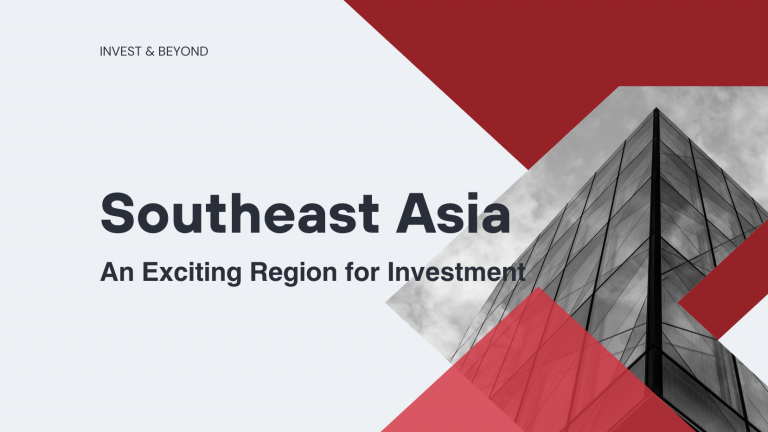Many investors agree that Southeast Asia is a fascinating region to invest.
The region continues to attract a substantial influx of Foreign Direct Investment, with figures on a steady increase.
The manufacturing industry has always been one of the cornerstones of Southeast Asia’s expanding economy. With the escalation of the trade war between the US and China and rising labor costs in China, there has been a notable increase in capital investment and relocation in the manufacturing sector.
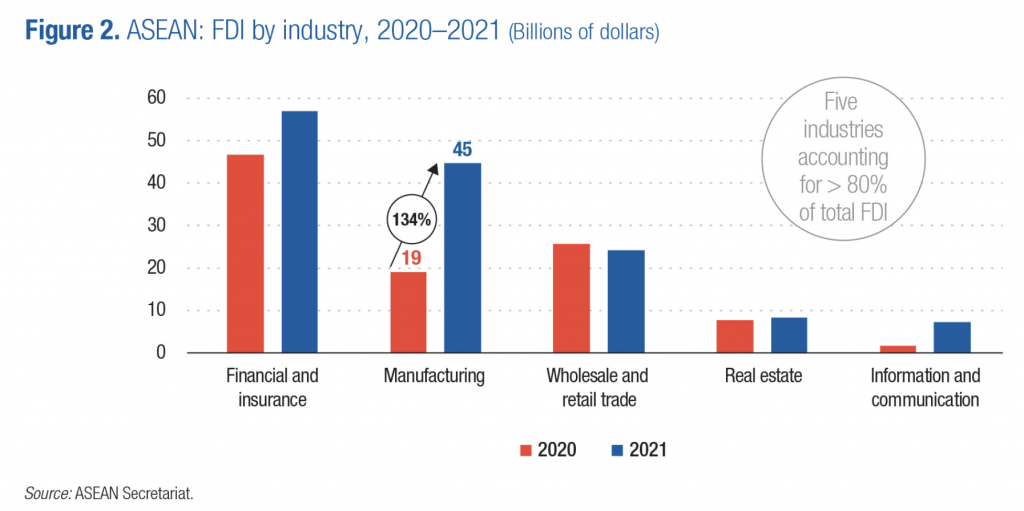
Southeast Asia also has an increasingly skilled and well-educated workforce and improved production capacities. The region has cemented its status as a manufacturing powerhouse across various sectors including electronics, automotive, textiles, petrochemicals, pharmaceuticals, consumer goods, and many more, attracting foreign investment and driving industrial development.
In addition to the manufacturing industry, a new sector has emerged that is attracting more investment: the digital economy. It is predicted that Southeast Asia’s digital economy may be set to hit $1 trillion by 2030 (CNBC).
More than 75% of the population in six major Southeast Asian countries have access to the internet. The number of internet users in those six countries reaching over 440 million people, of which 80% made an online purchase at least once (CNBC). ASEAN’s market of more than 600 million people is 9% of the world’s total population (ASEAN). It’s no wonder that by 2040, Southeast Asia will be an economic powerhouse fuelled by favourable demographics, industrialisation, urbanisation and technological advances (Australia’s DFAT).
Southeast Asia will be the world’s fourth largest economy by 2030. Its 700 million population is young, educated, increasingly online and with a growing middle-class is attracting the attention of the world (UK-ASEAN Business Council)
Other factors driving the growth of the economy and the digital economy in Southeast Asia:
Young demography. A significant demographic trend characterizes the region, with 55% of its 687 million inhabitants under the age of 35. This youthful demographic not only presents a sizable portion of the population but also lays the foundation for a substantial and productive working-age cohort extending well into 2040 and beyond (DFAT).
ASEAN is a growing hub of consumer demand. The middle class in Southeast Asia, currently comprising at least 190 million individuals, is poised for further expansion. This growing demographic will increasingly demand higher-value products and services, including healthcare, education, financial technology, and premium food and beverages (DFAT).
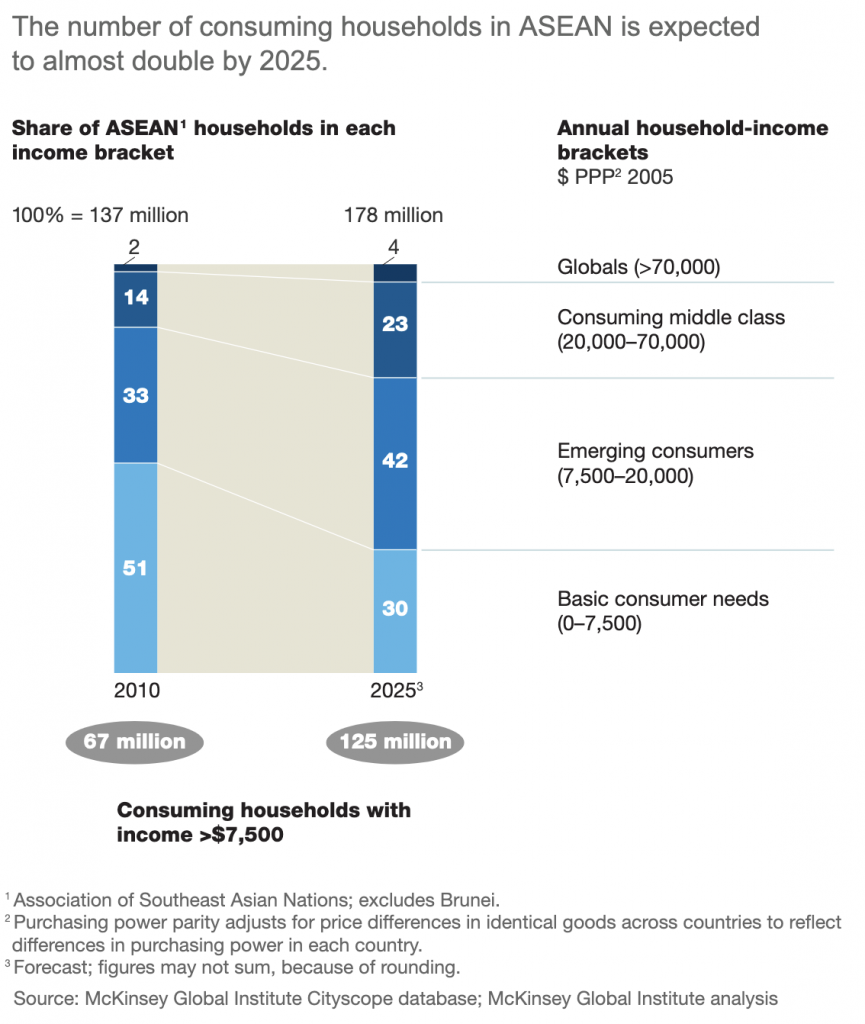
- GDP growth trajectory. In 2022, the collective nominal gross domestic product (GDP) of Southeast Asia stood at approximately US$3.6 trillion, surpassing the economies of nations like the United Kingdom, France, and Canada, and twice the size of the Australian economy. This impressive growth trajectory is anticipated to persist. By 2040, total nominal GDP will grow by nearly 383 per cent to US$13.86 trillion. Compound annual GDP growth projected at around 4 percent until 2040, while developed economies are likely to average GDP growth of 1 to 2 percent (DFAT).
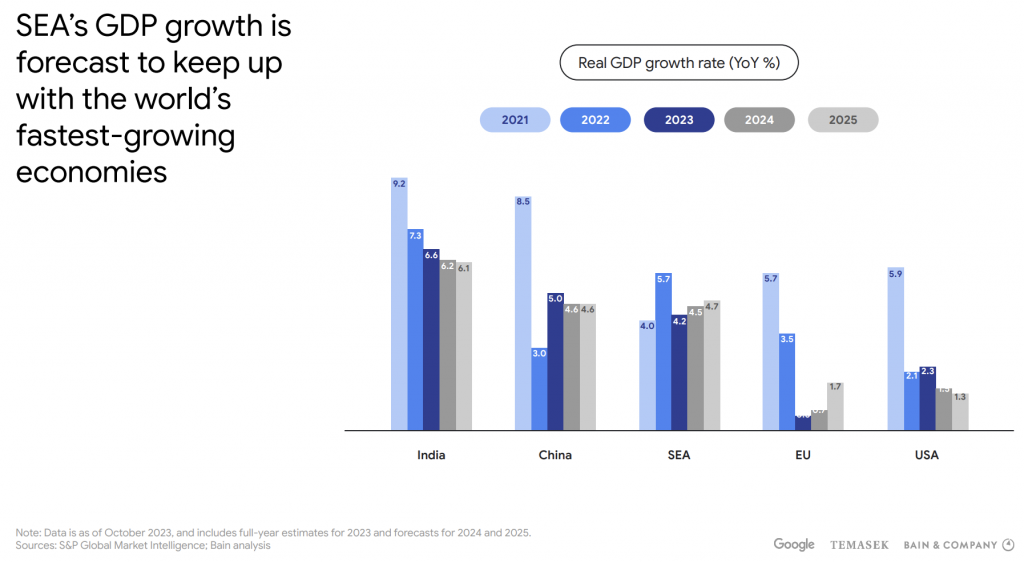
Increasing unicorns and rising stars. There are already over 7000 digital start-ups in Southeast Asia, 80 percent of which are based in Indonesia, Singapore or Vietnam (Asialink Business).
Rising disposable incomes and growing wealth in the region.
Under control inflation in the region
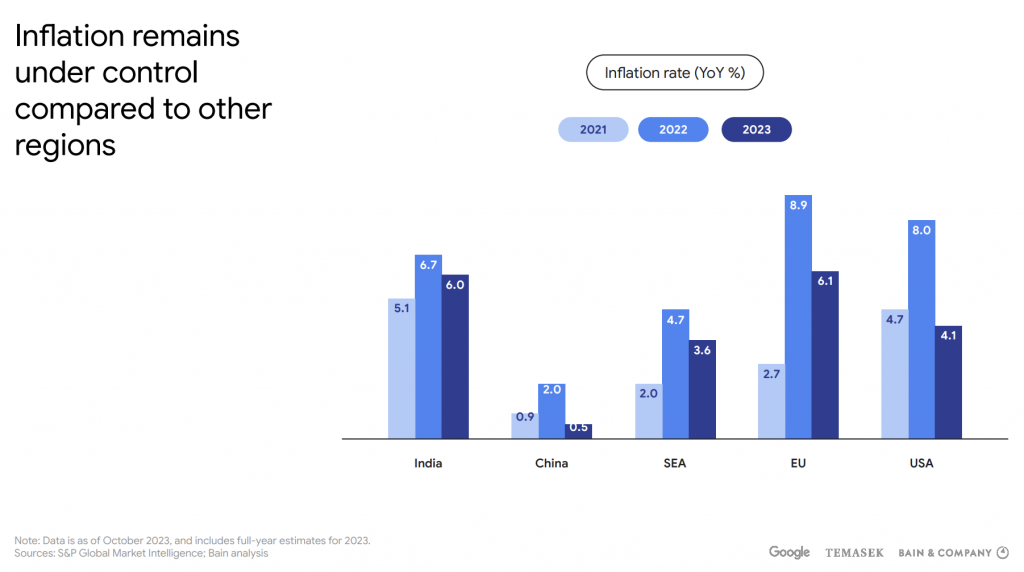
Digital engagement in various business categories.
Political and macroeconomic stability in the region.
Consumers are swiftly embracing digital financial services (DFS), marking a notable shift away from traditional cash transactions. Digital payments now constitute over 50% of the region’s overall transactions (A report from Google, Temasek Holdings and Bain & Company).
In 2023, the SEA digital economy delivered $100 billion in revenue, growing at 27% CAGR since 2021. GMV still grew 11% to $218 billion in 2023 (A report from Google, Temasek Holdings and Bain & Company).
Conclusion
Southeast Asia stands out as a vibrant and promising region for investment due to several compelling factors. With a young population, an increasingly educated and skilled workforce, a growing internet penetration and mobile device, expanding middle class, and robust economic growth projections, the region offers significant opportunities for investors. All of these conditions support the transition from a manufacturing to a digital economy, which has given rise to the principles of Industry 4.0.
Industry 4.0 has driven the development of smart manufacturing processes. This includes advancements in chip-making, robotics, IoT and cloud-based software that significantly improve traditional manufacturing practices. These innovations are contributing to a more resilient supply chain and attracting foreign companies to invest in testing, design and assembly in the region.
With increasing awareness of environmental concerns, there is also a significant push towards sustainability. Southeast Asia is now poised for growth in several key sectors, including the green economy, an increased focus on electric vehicles (EVs) and electrification, and renewable energy.
All these preconditions and progressive economic activities make Southeast Asia an exciting investment landscape with significant potential for long-term growth and prosperity.

